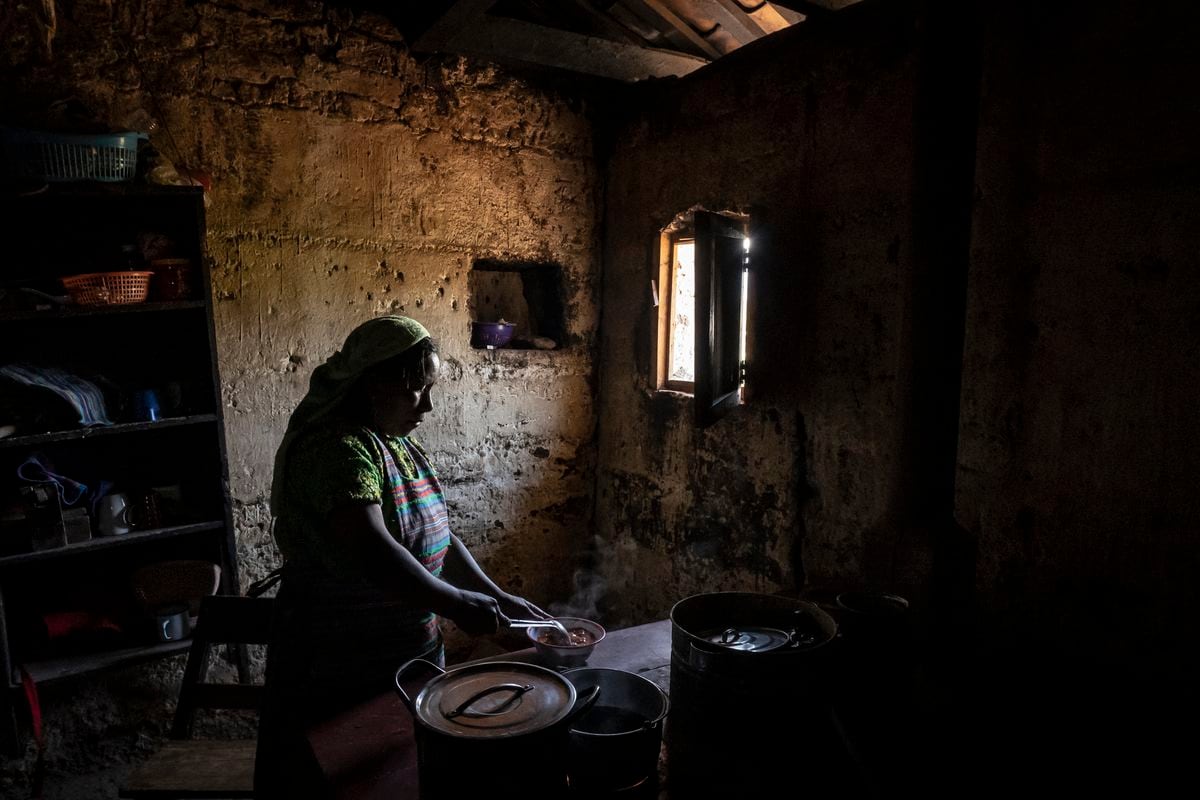Argentina, Brazil or Colombia had never seen such high incidence levels of detected covid cases. Paraguay or Uruguay, which until now had been unharmed by the pandemic, are breaking records for deaths per million. Peru, the hardest hit country in the world according to the excess mortality indicator in 2020, has seen a peak of dimensions comparable to last year in 2021. Even Chile, an outstanding student of world vaccination with half of its population fully immunized, faces a new wave of deaths.
While North America, with 40 infections detected daily per million inhabitants according to the latest available figure, and Asia, with 29, are at historic lows, and the whole of Europe is debating to avoid a rebound that is for now much less than what suffered in the past (the last European average is somewhat below 59 infections a day), in South America the epidemic curve has followed a relatively constant rise. The rise began in November of last year, with a minimum of 95 cases per million, and has remained above 300 per million during the last month. To sustain it, almost all the countries have taken turns at one time or another, with the prominent presence of the Uruguayan peak sustained in the last quarter. The virus reached the small southern country after keeping it at bay for a year,and it took advantage of the lack of immunity from previous infections to spread with speed.
But this availability for contagion did not exist in places like Colombia or Brazil, whose cities had experienced intense waves that, it was hoped, could have built at least some levees in the form of immunity. To explain this new and surprising episode of the tragedy, many voices focus on the new variants, mutations of the virus that would precisely avoid the acquired immunity. To this, the leaders of the region often add an accusing finger towards the supposed irresponsibility and laxity of the citizens. In contrast, the different oppositions usually focus on the choice of vaccines that, according to them, would be less effective than their alternative on the market. The lack of hospital infrastructure in many of the countries of the region has done the rest.
But the South American painting can be interpreted with those same elements from a different angle. Immunity acquired, by vaccine or by past infection, is not an absolute property of an individual or a population. It is about building defenses that decrease the likelihood of infection and (much more) serious disease, but these defenses are not the same for everyone or in every context.
For example: having a certain percentage of citizens with some type of immunity may be enough to make the contagion of it disappear if it is a population that has a complete vaccination schedule (double dose for all vials used except one: Jannsen's), resides in areas of relatively low density, can mostly afford to shelter in their homes and not expose themselves to work in case of small spikes located in neighborhoods or communities, and where new variants have not yet appeared that have improved the virus's ability to dodge existing defenses.
But that same percentage might not be enough in areas of high density or even overcrowding, in which, rather than neglect, what exists is the economic impossibility of sustaining isolation at home, and where the penetration of vaccination can open gaps equivalent to those that exist. it already maintains economic inequality. If, in addition, mutations with improved capacity make their entry, partially cracking the protections of past immunity due to infection, the risk of regrowth is considerable.
In Chile, Colombia or Argentina, for example, the focus has been on the supposed lack of quality of the vaccines of the Chinese Sinovac (for the first two) and the Russian Gamaleya or Sputnik (for the third). But in areas of Europe where none of them are used, growth is also observed, for now localized but already worrying for some observers. And the reality is that, to this day, no country in South America (not even in Europe) is even close to overwhelming percentages of immunization by vaccine.
Given that, due to the conditions of density, poverty and inequality, it is possible that the need for penetration of vaccination plans should be greater in the global south, perhaps the focus should be on the speed of vaccination, at least while we wait for studies to rule out or confirm that some variant completely eludes the protection offered by existing vaccines.
Something that, to this day, there is no confirmation.
The countries, one by one
Argentina
, by Mar Centenera (Buenos Aires)
Argentina registered 792 deaths from covid-19 on Tuesday, the highest number since the start of the pandemic, which has already claimed a total of 91,438 lives in the country. The impact of the second wave has been much higher than that of the first - due in part to the greater mobility of the population and the new, more contagious variants - and has forced the Government of Alberto Fernández to tighten restrictions in the most contagious areas. affected. Buenos Aires and its metropolitan area, where more than 30% of the Argentine population resides, concentrate more than half of the deaths from coronavirus to date.
The South American country has reached the beginning of the southern winter, the season of greatest risk for covid-19, with 19.5 million doses of vaccines applied until this Friday, 40% of them to people over 60 years of age.
The immunization campaign has accelerated in recent weeks thanks to the increase in vaccines received, but a large gap persists between those who have received the first injection and those who have full protection.
34.4% of the population has one dose, compared to 8.6% who have both.
The most widely applied vaccines in Argentina are Sputnik V, AstraZeneca (thanks to an agreement between the laboratory, Argentina and Mexico for their joint production in Latin America) and Sinopharm.
Brazil
, by Naiara Galarraga (São Paulo)
Brazil has just reached the daily record of new cases with 115,000 registered this Thursday. The day before the start of the third wave of infections was made official while a parliamentary investigation commission on the management of the pandemic is revealing signs of corruption by the Government of Jair Bolsonaro in the purchase of the vaccine produced in India. Immunization takes pace as the raw material to manufacture the injections arrives in Brazilian territory and the doses of the WHO Covax system arrive. Those completely vaccinated exceed 15% of adults; 42% have received the first dose.
Despite the fact that half a million accumulated deaths places it as the second South American country with the most deaths per million (after Peru), President Bolsonaro remains faithful to his attitude since the beginning of the pandemic.
On one of his last official trips, he lowered the mask on a child whom he held in his arms;
he was without a mask.
The polls already reflect the political wear and tear suffered by the health and economic crisis.
Two-thirds of Brazilians disapprove of how Brazil governs;
right now 23% would vote for him, according to the most recent poll.
The parliamentary inquiry commission that analyzes his management still has several weeks of live televised appearances ahead of him.
Chile
, by Rocío Montes (Santiago)
The arrival of the Delta variant in Chile, whose first confirmed case was announced on Thursday, has mobilized health authorities. Although the South American country has the best vaccination rates on the continent –64.12% of the target population has completed the scheme–, Chile is studying the application of a third dose to its inhabitants, given the high contagiousness of the new strain. It would begin to be applied in September to the first who were punctured, in February and last March, with the aim of cutting the chain of infections and increasing the immunity percentages.
In Chile, 78% of the 22,211,686 doses applied are from the Chinese Sinovac, whose effectiveness against the Indian variant is under study. The Ministry of Health, in turn, is analyzing the option of mixing vaccine schemes, so the government of Sebastián Piñera rushes the negotiations to ensure a greater number of doses of Pfizer, the Russian Sputnik V and Moderna.
The new wave of covid-19 facing Chile this winter is explained by the seasonal component of the virus, which is why specialists call it “anti-vaccine inertia” –the largest number of admitted to ICUs have not been vaccinated with two doses– and because of the government's restriction plan that has been constantly criticized, especially from unions, such as the Medical College.
With 32,000 deaths, only counting the confirmed deaths, Santiago completely entered confinement two weeks ago, although with the days some capital cities have come out of quarantines.
Today, there are 263 critical beds available nationwide.
Colombia
, by Santiago Torrado (Bogotá)
Colombia, which surpassed the milestone of 100,000 deaths from coronavirus this week, has announced the economic reactivation of different sectors at the worst moment of the pandemic.
It does so, to a large extent, burdened by the social outbreak that began on April 28 and with its population jaded by the confinement measures.
President Iván Duque has attributed the prominence of the third wave to the agglomerations of the protests against his Government, without conclusive evidence that they have caused supercontagion events.
That discussion has sparked heated debates as the daily death report, which had already climbed above half a thousand, has surpassed 600 deaths in recent days.
The projections for the first days of July are even worse.
In cities like Bogotá, Medellín, and Cali, intensive care units have been on the brink of collapse, and crematorium ovens are congested.
“Since January, in the last six months, we have concentrated two very aggressive epidemic peaks,” sums up Andrea Ramírez, an epidemiologist at the Los Andes University School of Medicine.
Added to the panorama of agglomerations is the presence of much more transmissible variants, he points out.
"The vaccination caught a good pace and speed very late," he values.
"We must accelerate that pace even more, but the pandemic is going much faster than us, vaccination is not going to be the only way to mitigate, we have to implement other measures," he warns.
Peru
, by Jacqueline Fowks (Lima)
Peru began immunizing 58 and 59-year-olds this Friday in Lima, although the process is progressing in the capital with long lines and calendar interruptions. The situation is even slower outside the capital, where citizens report disorder, excessive waiting time, sale of place in the lines and insufficient roads. According to the Ministry of Health, as of Thursday, June 24, more than 2.8 million people have received the two doses.
The Andean country reported 191,286 deaths on Wednesday and more than 2 million people infected by covid-19 since March of last year. Although at the peak of the second wave registered in April, the daily death toll exceeded 400 per day, this week the health authority reports 100 to 110 deaths every 24 hours. However, the National System of Deaths -which notifies according to the certificates issued by doctors- always reports twice as many daily deaths as those registered by the Ministry of Health.
At the beginning of the month, a team of experts appointed by the Government updated the death toll from covid-19 until May 22 to 180,764 people, a figure much higher than the 68,053 deaths counted up to that moment.
Peru thus became the country with the highest rate in the world in deaths per 100,000 inhabitants.
Lima (10%) and Callao (13%) are the regions with the highest percentage of immunized people, followed by other coastal departments with lower percentages.
In the Amazon region of Madre de Dios - on the border with Brazil and Bolivia - only 2.9% of the population has received the vaccine, and in Puno - on the border with Bolivia - 3%.
Health Minister Óscar Ugarte announced this week that Peru will receive 68 million vials this year that the government that will take office on July 28 will be able to administer.
Methodology and sources for the graphs
: the vaccination data, cases and confirmed deaths come from the collection maintained by Our World in Data, from the University of Oxford, and are ordered by reporting date to allow comparisons between countries. The figures are relativized per million inhabitants to facilitate comparison. For cases, the smoothed version (seven-day moving average) is offered daily. For deaths, those of each week are added, and Sunday is indicated as the reference date on the horizontal axis. In both series, but particularly in deaths, it is necessary to consider a certain lag that prevents the last data or two weekly data from faithfully representing the future situation, and there is probably a greater underreport in them.
Vaccination data are offered at the latest available date, consulted on Sunday, June 27.
In Argentina: June 26.
In Chile, Ecuador, Peru and Venezuela: June 25.
In Brazil, Colombia, Paraguay and Uruguay: June 24.
In Bolivia: June 21.
Subscribe here
to the
newsletter
of EL PAÍS América and receive all the informative keys of the current situation of the region.


/cloudfront-eu-central-1.images.arcpublishing.com/prisa/ZU5KUJFBSRGVVM2SXJTZBZP3XI.jpg)




/cloudfront-eu-central-1.images.arcpublishing.com/prisa/EMYXC3EVHNEG3OJHGIQCB2IVYA.jpg)







/cloudfront-eu-central-1.images.arcpublishing.com/prisa/IGZ7GOCXZ5GUPAQ2HWGK6Z76BU.jpg)